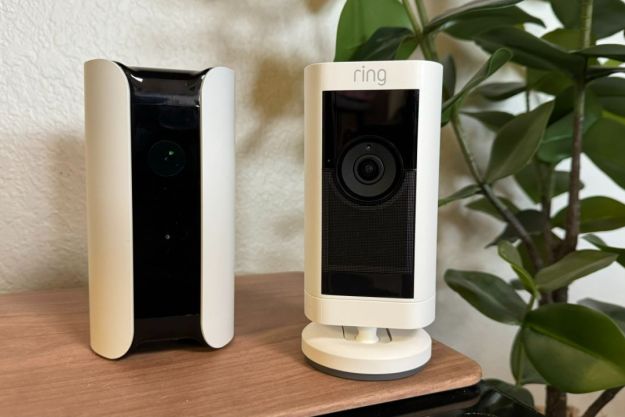You’ve seen it tons of heist movies: A bunch of laser sensors placed at random heights requiring the thief to come up with a clever or acrobatic way to slink through the crisscrossing beams. It may seem a bit elaborate to protect your home, but Xandem Home doesn’t see it that way.
Instead of several visible lasers, though, Xandem says its cutting-edge technology uses radio waves to monitor what’s happening in your house. It started with Neal Patwari and Joey Wilson’s National Science Foundation-funded research at the University of Utah and is now a project on Indiegogo.
Xandem’s nodes are different from traditional motion sensors. Its radio waves create an “invisible sensing web” to sense motion then track it around the house. Using a bunch of nodes (you’ll need about 10 to cover a 1,500-square-foot home but two kits to outfit a two-story home), you’ll build that web — which would look pretty similar to that laser hallway if you could actually see it. Xandem’s algorithms detect when someone’s interrupting the links between the nodes and can even tell when it’s your cat, provided it’s under 30 pounds. If you have a big, old guard dog, Xandem says you can make the system a bit less sensitive to account for Crusher’s movements. You’ll be able to watch an intruder as he or she moves from room to room on the accompanying app, but the system’s gateway will sound an alarm if it detects motion to hopefully scare them away.
Each node needs its own plug, but you can put them in those difficult-to-reach ones behind the sofa, because they work through walls and furniture. Still, 10 to 15 plugs is a lot of valuable outlet real estate. And while you’ll need two kits if you have a two-story house, the system is designed to cover your entire home and is meant to be less intrusive than a camera-based approach. “Xandem Home is not just a new product — it’s based on a fundamentally new technology that we’ve been working on for a long time,” Xandem’s CTO, Dr. Dustin Maas, told Digital Trends in an email. “We’ve finally been able to put this technology into a consumer product that everyone can benefit from.”
The system also requires a monthly monitoring fee, which Xandem is waiving for its Indiegogo backers, for life. A 10-node kit currently costs $475, plus $20 shipping in the U.S., with delivery expected in August 2016. The usual backer-beware warning for crowdfunding projects applies as always.
Editors' Recommendations
- Arlo Pro 5S vs. Ring Stick Up Cam Pro: Which is the best premium security camera?
- Ring Pan-Tilt Indoor Cam vs. Ring Stick Up Cam Pro: Which is better for your home?
- SimpliSafe is now using AI to prevent burglars from entering your home
- Home Depot’s Hubspace is a great way to start building your smart home
- Blink Mini 2 vs. Blink Mini: Is Amazon’s new security camera a worthy upgrade?


